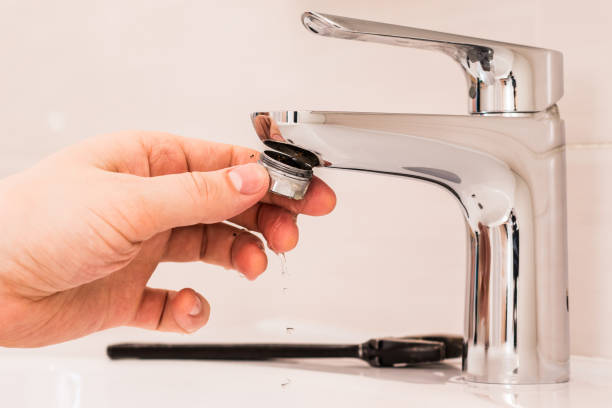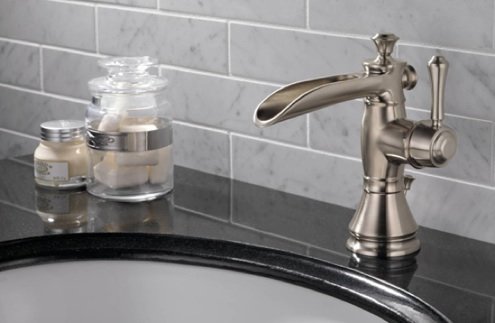When It's Needed to Repair a Leaking Faucet
When It's Needed to Repair a Leaking Faucet
Blog Article
This great article directly below involving Why It's Important to Fix Leaky Faucets is without a doubt attention-grabbing. Have a go and make your own personal final thoughts.

Dripping faucets could seem like a minor aggravation, yet their effect exceeds just the aggravation of the audio. From wasting water to incurring unneeded monetary costs and wellness dangers, overlooking a trickling faucet can bring about different consequences. In this write-up, we'll delve into why it's crucial to address this usual home concern quickly and properly.
Wastage of Water
Environmental Influence
Dripping taps add considerably to water waste. According to the Epa (EPA), a single faucet leaking at one drip per secondly can throw away more than 3,000 gallons of water per year. This not only stress water resources yet also influences communities and wildlife depending on them.
Step-by-Step Guide to Fixing a Dripping Faucet
Devices Needed
Before attempting to take care of a leaking faucet, gather the needed devices, consisting of an adjustable wrench, screwdrivers, replacement parts (such as washing machines or cartridges), and plumber's tape.
Usual Faucet Issues and Their Solutions
Identify the type of tap and the certain issue causing the drip. Usual issues include damaged washers, rusty valve seats, or faulty O-rings. Describe producer guidelines or on the internet tutorials for detailed support on repairs.
Financial Costs
Boosted Water Bills
Beyond the ecological impact, leaking taps can inflate water expenses considerably. The built up waste with time translates into greater utility expenses, which might have been stayed clear of with prompt repairs.
Potential Property Damage
Moreover, prolonged dripping can result in damage to fixtures and surfaces surrounding the faucet. Water accumulation can cause discoloration, deterioration, and also structural issues if left unattended, resulting in added repair service expenses.
Health Worries
Mold and Mold Development
The constant visibility of wetness from a leaking tap produces a perfect atmosphere for mold and mildew and mold growth. These fungi not only jeopardize indoor air quality however likewise present wellness risks, particularly for individuals with respiratory conditions or allergies.
Waterborne Diseases
Stagnant water in trickling taps can end up being a breeding ground for germs and other microorganisms, raising the risk of waterborne conditions. Pollutants such as Legionella microorganisms prosper in stationary water, possibly bring about significant ailments when consumed or breathed in.
DIY vs. Specialist Fixing
Advantages and disadvantages of DIY Repair Service
While some might try to fix a trickling tap themselves, do it yourself repair services include their own set of obstacles. Without appropriate understanding and tools, DIY efforts can worsen the issue or lead to insufficient repair work, prolonging the issue.
Benefits of Employing a Professional Plumber
Working with a professional plumber makes certain that the underlying reason for the leaking tap is attended to effectively. Plumbing technicians have the know-how and equipment to identify and fix tap concerns efficiently, saving time and lessening the threat of more damage.
Ecological Responsibility
Individual Contribution to Conservation
Taking obligation for taking care of leaking faucets lines up with wider efforts toward water conservation and environmental sustainability. Every individual's activities jointly make a significant impact on maintaining priceless sources.
Sustainable Living Practices
By prioritizing prompt fixings and taking on water-saving practices, individuals add to sustainable living techniques that benefit both existing and future generations.
Preventive Measures
Normal Maintenance Tips
To prevent trickling faucets, execute routine upkeep such as cleaning up aerators, inspecting for leakages, and replacing damaged components quickly. In addition, think about installing water-saving devices or updating to a lot more effective fixtures.
Relevance of Prompt Fixes
Attending to dripping taps as soon as they're discovered prevents additional water wastefulness and prospective damage, eventually saving both water and money in the long run.
Effect On Building Worth
Understanding of Well-Maintained Residential Property
Preserving a property in good condition, consisting of addressing upkeep problems like dripping faucets, improves its regarded value and charm amongst possible purchasers or occupants.
Influence on Resale Worth
Properties with properly maintained plumbing fixtures, consisting of faucets, command greater resale values in the property market. Resolving leaking taps can contribute to a favorable impression during home examinations and settlements.
Verdict
Addressing a leaking tap goes beyond mere comfort; it's an essential step towards preserving water, reducing monetary expenses, and securing wellness and property. Whether through DIY repairs or professional assistance, taking action to fix dripping taps is a tiny yet impactful method to advertise liable stewardship of sources and contribute to a healthier, extra lasting future.
How to Fix a Leaky Faucet: Step-by-Step Repair Guide
A leaky faucet may seem like a simple annoyance, but if it's not fixed promptly, that leak could cost hundreds to potentially thousands. From water damage to mold, mildew, and high water bills, even a tiny leak can be catastrophic if left unattended. Damage like this can even affect the overall value of your home, so it's important to take the right approach for leaky faucet repair. You may need the help of a plumber in some cases, but we've got a few tips you can try on how to fix a leaky faucet before calling the pros.
Four Faucet Types
When you're learning how to fix a leaky faucet, the first step is knowing what kind of faucet you're working with! There are four common types.
Cartridge Faucets
Cartridge faucets come in one- or two-handled varieties. In one-handled cartridge faucets, hot and cold water combines in a single cartridge. In the two-handled versions, hot and cold water are controlled separately and mixed in the faucet.
Ball Faucets
Ball faucets have a single lever you push up and down to adjust the pressure and rotate to change the temperature. A slotted metal ball controls the amount of water allowed into the spout.
Compression Washer Faucets
They're the oldest type of faucet, but they're still used in many homes — especially older ones. Compression faucets have two separate handles that, when turned, raise or lower the washer that seals a water valve. This valve stops water from flowing through the faucet when it is turned off.
Disc Faucets
Disc faucets rarely need to be repaired due to their maintenance-free design. The water flow is controlled by two discs — the upper one raises and lowers against a fixed lower disc, creating a watertight seal. If your disc faucet starts leaking, you may need to replace the seals or clean residue buildup from the inlets.
Fixing a Leaky Faucet
Step 1: Turn Off the Water
Whether you're learning how to fix a leaky bathtub faucet or how to fix a leaky kitchen faucet, always turn off the water supply to your working area when you're fixing a leak. The last thing you want is a flood added to your list of things to fix.
Look for the shutoff valves below your sink or around the tub and turn them clockwise to stop the water flow. If your faucet doesn't have shutoff valves, you may need to turn off the water for the whole house. Check to make sure it's off by turning the faucet on. If nothing comes out, you're ready to start the repair.
Step 2: Take Apart the Faucet
How you disassemble your faucet depends on the type of fixture you have. You can use a flathead screwdriver to remove the caps on top of the handle or handles for cartridge and compression faucets. Inside, you should see handle screws. Unscrew these with a screwdriver to remove the handle.
Disc- and ball-style faucets will typically have an inlet screw near the handle, and removing that will reveal the interior of the faucet.
Detach the Valve Stem
For cartridge- and compression-style faucets, you'll see the inner valve stem or cartridge once you remove the faucet handles. If you have a compression faucet, unscrew the brass valve stem. If you have a cartridge faucet, pull out the cartridge. If your cartridge has been in place for a while, it may require some tools or extra force to remove it due to mineral deposits.
Examine and Replace Parts
Once you've removed the parts, check them out to confirm what needs to be replaced. You may see corroded rubber washers, O-rings, stems, or cartridges. On a ball-style faucet, check the seats and springs for damage.
If you need to repair a leaky disc faucet, check the inlet and seals on the lower disc.
Once you determine what parts must be replaced, visit your local hardware store. Bring the damaged parts with you to ensure you can purchase the correct components to replace them.
Clean Valves and Faucet Cavity
If you've removed a stem or cartridge, you may notice mineral buildup in the faucet's threads. Use white vinegar to clean the valve seat by soaking it for a few minutes, then scrub it away with a soft toothbrush and rinse with warm water. You can also clean the interior of the faucet in the same way.
Reassemble the Faucet
Once your faucet is cleaned and the required parts have been replaced, it's time to reassemble it. Put the pieces back together and slowly turn the water supply back on. Doing this slowly is crucial because too much initial water pressure can damage the new hardware you've just installed.
https://homewarranty.firstam.com/blog/how-to-fix-leaky-faucet

I'm very drawn to What Causes Leaky Faucets & How To Fix Them and I am assuming you appreciated the entire blog posting. Sharing is caring. Helping people is fun. Kudos for being here. Return soon.
Report this page